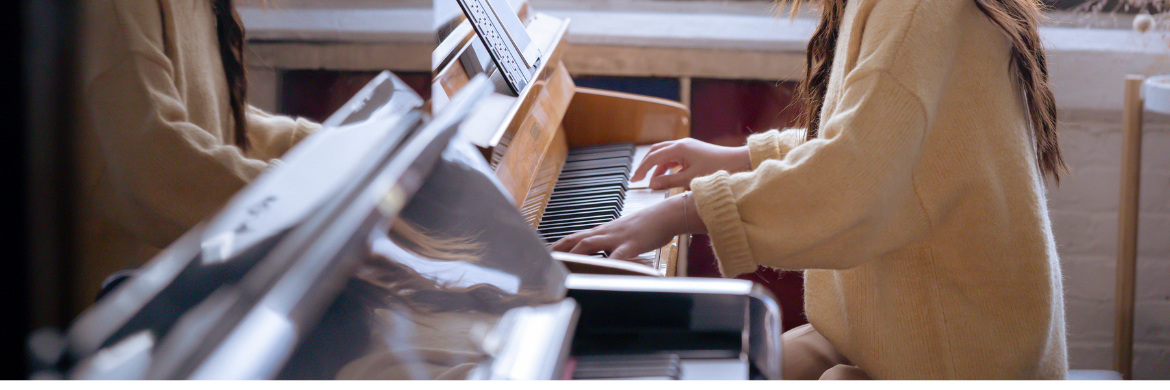
Focal hand and limb dystonia usually manifests as a painless loss of muscular control in highly practiced movements. A genetic predisposition is surmised in less than 5% of all cases of focal dystonia.
Many professions require repeated and intricate hand movements. However, focal hand dystonia is strikingly more common in musicians than any other group of professionals, including dentists, surgeons, and writers. This disorder is often referred to in medical literature as occupational cramps (for example, “violinist’s cramp” and “pianist’s cramp”).
- Symptoms
Most affected musicians describe symptoms in musical terms. A musician may notice:
• Subtle loss of control in fast passages
• Lack of precision
• Curling of fingers
• Fingers “sticking” to keys
• Involuntary flexion of bowing thumb in strings
A tremor may or may not be associated with the spasms.In most cases, the dystonia is present only in the context of specific tasks. For example, some woodwind doublers report the dystonia may be present while playing the clarinet but not while playing the saxophone.
The dystonia may appear extremely sensitive to sensory input: a pianist may experience symptoms while playing on ivory keys but not while playing on plastic keys. Sometimes the modification of posture and even facial expressions may affect dystonic spasms in the hand.
- Cause
There is no one isolated cause of hand and limb dystonia. A variety of pathological conditions may lead to similar symptoms. As a child develops, he/she learns many different movements (such as walking, writing, or playing an instrument) that are stored in the brain as motor programs. Instances of hand dystonia that are highly task-specific have been described as a “computer virus” or “hard drive crash” in the sensory motor programs that are essential for playing music. However, additional factors, such as a genetic predisposition, are likely to play a significant role in the development of such a sensory-motor dysfunction. Why this “computer virus” cannot be easily overcome by establishing a new and improved sensory-movement pattern remains an important question for researchers.
In a small group of musicians affected by dystonia, the hand cramps may be related to other dystonias. Symptoms may develop following the onset of writer’s cramp or may be an initial manifestation of segmental or generalized dystonias.
- Treatment
There is no cure for dystonia at this time, and although treatment of the disorder may be challenging, there are several available options. The different causes of hand dystonia may warrant different treatments.
Anticholinergic drugs, such as Artane ® (trihexyphenidyl), can be helpful in treating focal dystonias by affecting the transmission of messages from the brain to the muscles.
Botulinum toxin injections may be used to compel the body to create new programs by blocking the nerve impulses to the contracting muscles. The injections temporarily weaken the muscle so that the spasm is reduced and a different wrist position is necessary to compensate for the relaxed muscle. In this case, the injection itself is not the solution but rather a tool to facilitate the musician developing a modified motor program.
The ultimate aim of treatment is to establish new sensory motor programs to accomplish the tasks required for playing music. It might be possible to modify the instrument, for example, by altering the position of keys in woodwinds or reversing the posture with left hand bowing in string players. Changing motor programs for pianists is more challenging.
- What Type of Doctor Treats Musician's Dystonia
The type of doctor that is typically trained to diagnose and treat dystonia is a neurologist with special training in movement disorders (movement disorder specialist). Select performing arts medicine specialists may also be qualified to identify and treat dystonia, depending on their training and experience.
- Living with Musician's Dystonia
Living well with dystonia is possible. Individuals affected by dystonia are strongly encouraged to:
• Seek evaluation from a neurologist with special training in movement disorders.
• Learn about dystonia and treatment options.
• Seek expert mental health professionals to diagnose and treat possible co-existing anxiety and/or depression.
• Develop a support system of support groups, online resources, friends, and family.
• Explore complementary therapies for overall wellness.
• Get active within the dystonia community.
- Leon Fleisher's Foundation for Musicians with Dystonia
Musicians With Dystonia was founded in 2000 by Glen Estrin, a former professional French horn player diagnosed with embouchure dystonia, and Steven Frucht, MD in partnership with the Dystonia Medical Research Foundation (DMRF). The program was renamed in 2020 to the Leon Fleisher Foundation For Musicians With Dystonia to honor the memory of Leon Fleisher.
The Foundation established a network of health care practitioners knowledgeable about the disorder and an informal support network of fellow affected musicians.
- Keith Emerson Fund & Tribute
Keith Emerson, legendary keyboardist and composer, best known as a founding member of the iconic supergroup Emerson, Lake & Palmer, was lesser known for his struggles with musician’s dystonia, which significantly impacted his ability to perform. Keith passed away in 2016, but his legacy as a performer lives on. His family and friends are honoring this legacy by supporting the DMRF in his memory. Learn more.
Plus, a new concert film and album documents the May 2016 tribute show in his honor. The Official Keith Emerson Tribute Concert is available as a four-disc set featuring DVD and two CDs capturing the entire two-and-a-half-hour event and a disc of bonus interviews. Click here for details and to order.
- Peer Support for Musicians
Musicians with Dystonia Support Forum is a private Facebook group where musicians affected by dystonia are welcome to connect, to give and get support.
Thank you to Dystonia Medical Research Foundation (USA) for allowing us to share this information. The DMRF is a 501(c)(3) non-profit organization dedicated to advancing research for improved dystonia treatments and ultimately a cure, promoting awareness, and supporting the well-being of affected individuals and families.
